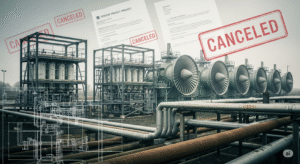In a major leap forward for energy storage, researchers at the University of Tokyo have developed a new generation of solid-state batteries that offer significantly improved safety, charge speed, and energy density compared to today’s lithium-ion counterparts. The breakthrough, published in Nature Materials, is expected to have a transformative impact on electric vehicles, renewable energy grids, and portable electronics.
The Breakthrough: A New Solid Electrolyte Material
The research team has synthesized a novel ceramic electrolyte called “Ti-LiOxide Matrix,” which maintains ionic conductivity similar to liquid-based cells but remains thermally stable up to 200°C. This new material solves three critical problems:
- High conductivity: Fast lithium-ion transport at room temperature
- Stability: Resistant to dendrite formation that causes short-circuiting
- Longevity: Maintains over 90% capacity after 2,000 charge cycles
“We believe this material could lead to the first commercially viable solid-state batteries by the end of the decade,” said Dr. Naoko Ishikawa, principal investigator on the project.
Implications for Electric Vehicles (EVs)
One of the biggest hurdles for electric vehicle adoption is battery limitations. Current lithium-ion technology struggles with charging speed, heat generation, and range. The University of Tokyo’s solid-state battery prototype has demonstrated:
- 400% faster charging than conventional lithium-ion
- Range extension of up to 45% due to higher energy density
- Operational safety with no risk of thermal runaway
Major automakers like Toyota and BMW have already begun collaborating with the university’s tech spin-off to integrate this innovation into their 2028 vehicle lineups.
Renewable Energy Storage and Grid Applications
As countries shift toward renewable energy sources like solar and wind, the need for efficient and scalable energy storage becomes more urgent. Solid-state batteries offer a solution with:
- Longer life: Capable of lasting 10–15 years with minimal degradation
- Higher efficiency: Less energy loss during charge/discharge cycles
- Modular safety: Ideal for residential and industrial-scale battery banks
Japanese utility providers are already testing these batteries in grid-scale pilot programs in Tokyo and Osaka, aiming for large-scale deployments by 2027. This could significantly boost Japan’s goal to reach net-zero emissions by 2050.
Global Race Toward Solid-State Battery Commercialization
While companies like QuantumScape in the U.S. and Solid Power in Europe are also making strides, the University of Tokyo’s research is notable for its scalable design and environmental resilience.
“This is not just a lab experiment,” said Dr. Ishikawa. “We’ve produced over 1,000 full-sized battery cells, and they are performing consistently under real-world temperature and humidity conditions.”
The batteries are also more environmentally friendly. Since they require fewer rare earth metals, they reduce the environmental cost and geopolitical complexity of lithium-ion battery production.
Challenges and Next Steps
Despite the promising results, mass production remains a hurdle. Solid-state batteries are difficult to manufacture at scale due to precision requirements in layer thickness and ceramic processing. To overcome this, the research team is partnering with Japanese electronics manufacturer Murata to develop automated fabrication systems.
The next phase involves testing the batteries in extreme environments, including aviation, defense, and maritime shipping, where safety and longevity are critical. Early indicators suggest that the batteries can perform reliably at high altitudes and in cold climates, opening the door to a wide range of industrial use cases.
Expert Reactions
Global energy researchers are already responding with optimism. “This is one of the most practical advances in solid-state battery science I’ve seen in years,” said Dr. Anika Müller, an energy storage expert at the Technical University of Munich.
She emphasized the significance of the electrolyte’s thermal stability and lack of dendrite formation—two challenges that have derailed similar projects in the past. “If they can truly commercialize this, we’re looking at a generational shift in how we power everything from cars to buildings.”
Potential for Consumer Electronics
In addition to EVs and grid storage, this breakthrough could change smartphones, laptops, and wearables. Current prototypes have shown:
- Faster charging: 0 to 80% in under 10 minutes
- 20–30% thinner designs due to smaller packaging needs
- Better heat resistance, reducing device overheating
Companies like Sony and Panasonic have expressed interest in applying this technology in next-generation consumer devices, potentially reducing reliance on traditional lithium-ion cells by 2028.




